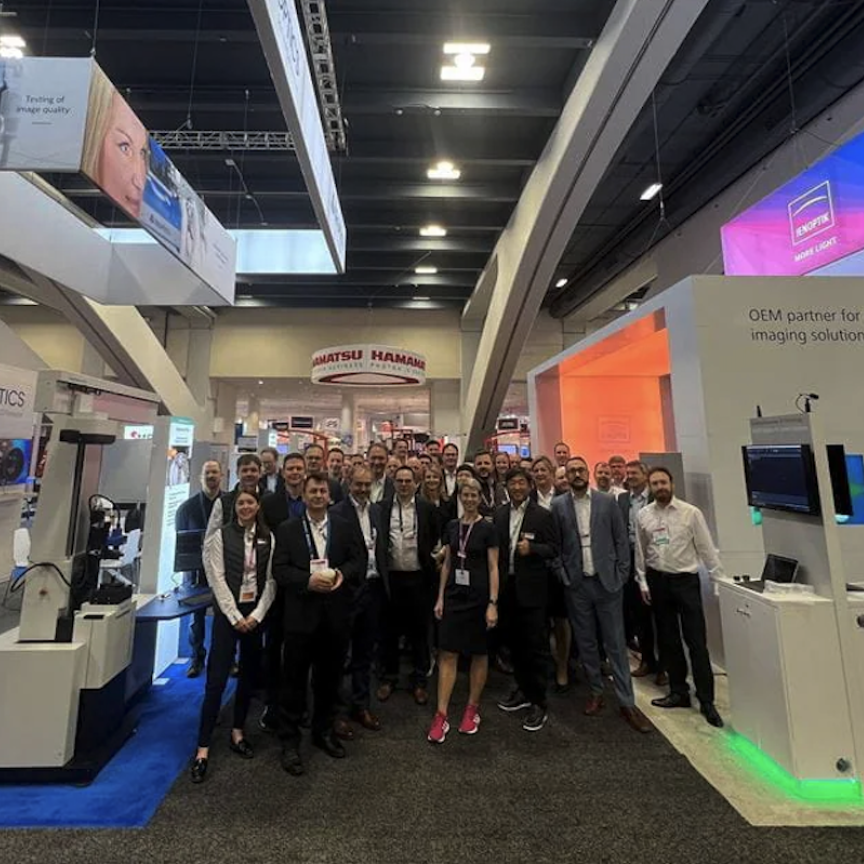Spectrum Scientific has been blazing a trail in the field of precision optics since its establishment in 2004.
Specialising in manufacturing high-volume aspheric and freeform mirrors, hollow retroreflectors, and holographic diffraction gratings, Spectrum Scientific Inc. (SSI) has been at the forefront of technological advancements in optics.
The company was established in 2004, when the founders saw a market opportunity to provide high-quality optics using the optical replication process. This process, originally developed for manufacturing diffraction gratings, has become the cornerstone of SSI's manufacturing capabilities, enabling the efficient high-volume production of not just diffraction gratings but also complex surfaces such as aspheric mirrors, freeform mirrors and hollow retroreflectors.
The company’s unique approach enables the production of high-fidelity, high-specification precision optics at a lower cost compared to traditional volume manufacturing methods. One of its key capabilities is the ability to manufacture freeform optics, off-axis paraboloids and ellipsoid mirrors with surface figures down to λ/10 or better.
Optical replication process and advantages
The optical replication method involves creating a master optic and then replicating it in high volume with consistent precision. This offers key advantages, such as low cost compared to traditional manufacturing methods, flexibility, and repeatability. SSI can also incorporate mounting features and fiducials onto the mirror and retroreflectors substrates, facilitating easy alignment and providing additional design and cost benefits.
David Cook, General Manager at SSI explains: “Without optical replication technology, many precision, mass-produced instruments wouldn't be possible, because you couldn't make enough original diffraction gratings, aspheric or freeform mirrors to meet the demand. An original diffraction grating can take, for example, two to six weeks to set up and see you manufacture just one; whilst in the same time, optical replication allows you to manufacture hundreds. Similarly, even after setting up and making an aspheric mirror using traditional manufacturing techniques, you can make, maybe, a few each day, depending on the complexity. However, by manufacturing a single master and using optical replication, we can transfer the optical surface onto another substrate and produce dozens a day, even with highly complex surfaces.”
SSI's products have found applications in a variety of markets, ranging from satellite imaging and defence to metrology, photonics, and life science instrumentation. Aspheric mirrors, in particular, are gathering pace in life science, space and defence markets due to their advantages over traditional lenses. These include broader spectral coverage, no dispersion, and reduced aberrations, making them crucial elements in spectrometers, analytical instruments, and astronomical optical systems.
In the company’s 20-year history, it has witnessed its fair share of trends in terms of what customers are requesting. One of the latest is the use of retroreflectors, as more and more exciting use cases present themselves. Cook says: “I've noticed that the retroreflectors are becoming more popular. They're now being used more and more in low earth orbit (LEO) satellite networks to track the satellite’s position. That’s an interesting new application that's come up in the past few years.”
Hollow retroreflectors have become a key product from SSI. The company’s retroreflectors boast a remarkable return beam accuracy of <2 arcsec. Their one-piece construction from solid aluminium ensures insensitivity to vibration, position, and movement – making them ideal for not only satellite networks, but also applications such as Michelson-type interferometers, FTIR spectrometers, and laser-based tracking systems.
Additionally, SSI specialises in manufacturing plane, concave, and convex blazed holographic diffraction gratings. These gratings, made using a proprietary blazing technique, offer high efficiency in the UV and lower stray light compared to conventional ion-etched gratings. In addition to established applications such as life science and analytical instrumentation, they have, notably, also been selected for high-profile space projects like the Orbiting Carbon Observatory (OCO) and Ozone Mapping Profiler Suite (OMPS) where very high efficiency and ultra-low stray light were a prerequisite.
Pioneering advances in UV optics
The UV is another area in which the company has seen more demand, with the increased use of UV lasers and diodes coupled with improved sensor technology. This, in particular, has led to an increased interest in the VUV/DUV region in several applications. Daphnie Chakran, CEO & President at SSI, explains: “We're seeing increased interest in the ultraviolet, especially the VUV and DUV, and we have some really good coatings for these regions. It's a growth market, because, as sensors and UV diodes and LEDs have become mass produced and cheaper, there are a lot more applications using them because there’s a lot of useful information in the UV – not just in spectroscopy, but also in the study of electronic circuits, in high resolution microscopy and selective molecular imaging. The semiconductor industry has also been in the UV and the EUV for quite a while now, so there is this move towards UV sensing for which we're certainly seeing more and more inquiries.”
Recognising these evolving demands, SSI has developed aspheric mirrors with DUV/VUV coatings, optimised from 120 to 200nm. These coatings can provide up to 10% higher reflectivity compared to other coatings on the market. This innovation addresses the challenges faced by optical systems operating in the VUV/DUV region, enhancing sensitivity and reducing overall throughput losses.
As the demand for precision optics continues to grow, SSI has identified additional opportunities in the telecom, defence, and space industries. With a focus on LEO satellite constellations, optical replication offers the capability to not only provide retroreflectors, but also deliver aspheric mirrors in a fraction of the time compared to other manufacturing techniques. SSI is also exploring the use of materials such as SiC and aims to incorporate multiple surface functionalities onto a single optical surface, capitalising on SiC's advantages in stiffness, low CTE, and good thermal conductivity. These industries are also increasingly interested in freeform optics.
Explains Chakran: “We're going to be seeing even more requests for freeform gratings in the near future, because people such as NASA are already using them, so they're starting to trickle down to the commercial sector. We’re already seeing more requests in space communications for these types of optics, so that's an exciting, big growth area in the future. It’s different materials too, that they're using. It’s neat to see that they're trying out different materials such as SiC, so it's not your basic glass mirrors or aluminium.”
SSI is also pioneering the replication of optical surfaces directly onto metal mounts. This innovation offers customers significant time savings during assembly and alignment, contributing to a more efficient and cost-effective manufacturing process.
Customer-centric approach and engineering collaboration
A big part of what sets SSI apart is its commitment to quality, as Chakran explains: “We can do most of the types of things that our competitors can, but there's only a handful of companies out there that do what we do, particularly when it comes to product integration.”
But it’s also the firm’s commitment to its customers that really sets it apart from the rest. Says Cook: “Customer service and personalisation are much easier to get from us. We have one telecom customer that has said that it worked with all the other guys and then came to us because we were more willing to engineer a solution for them. Whereas some of the other companies were pushing them towards an off-the-shelf solution, or a solution that benefits them. We worked very closely with the client's engineers to ensure that we designed the product exactly to meet their specifications. So it could do exactly what they wanted, rather than trying to fit something that we already had. And that worked extremely well for them.”
Find out more information about SSI by visiting the company website, or catch up with the team at the upcoming SPIE Photonics West, which takes place in San Francisco in January. You can find them on booth #3603.


